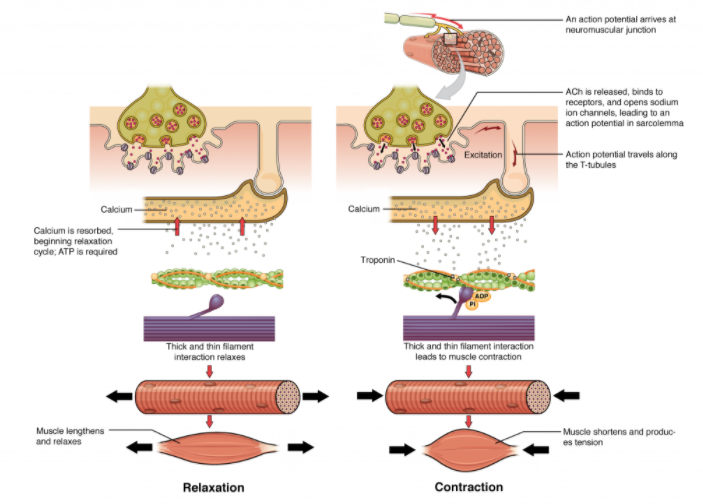Follow the events of excitation-contraction coupling that lead to cross bridge activity.
The sequence of events that result in the contraction of an individual muscle fibre begins with a signal—the neurotransmitter, ACh—from the motor neuron innervating that fibre. The local membrane of the fibre will depolarize as positively charged sodium ions (Na+) enter, triggering an action potential that spreads to the rest of the membrane will depolarize, including the T-tubules. This triggers the release of calcium ions (Ca++) from storage in the sarcoplasmic reticulum (SR). The Ca++ then initiates contraction, which is sustained by ATP. As long as Ca++ ions remain in the sarcoplasm to bind to troponin, which keeps the actin-binding sites “unshielded,” and as long as ATP is available to drive the cross-bridge cycling and the pulling of actin strands by myosin, the muscle fibre will continue to shorten to an anatomical limit. Muscle contraction usually stops when signalling from the motor neuron ends, which repolarizes the sarcolemma and T-tubules, and closes the calcium channels in the SR. Ca++ ions are then pumped back into the SR, which causes the tropomyosin to re-cover the binding sites on the actin.

Step by step
Solved in 2 steps with 2 images









